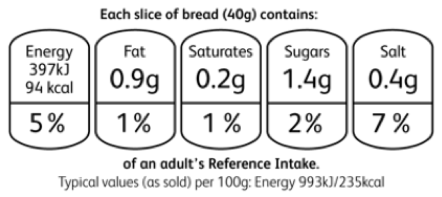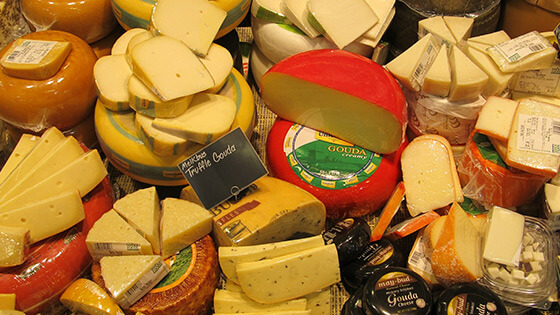Recommended daily allowance
As well as the guidance to help us know what types of food to eat, there is also guidance available on the amount we should eat. This information can be really useful when buying food, as we can use the information on the food label to help us to decide whether or not the food contains healthy ingredients.
Reference intake (RI) information – previously known as Guideline Daily Amounts (GDAs) – outlines the maximum amount of calories and nutrients you should eat in a day. This information can help you to identify how food contributes to your healthy eating (or not).
The daily reference intakes for an average adult, aged 19 to 64 are as follows:
- Energy: 8,400kJ / 2,000kcal
- Total fat: less than 70g
- Saturates: less than 20g
- Carbohydrate: at least 260g
- Total sugars: 90g
- Protein: 50g
- Salt: less than 6g
These reference intakes provide useful guidance as to the amount of energy (calories) you should be consuming each day as well as limits that should be applied to the amount of fat, sugar and salt in your diet.
As well as this reference intake information, there are also guidelines that tell you whether a food is classed as being high in fat, saturated fat, sugar and salt.
Click on the buttons below to learn more.
Fat
If a food contains more than 17.5g of fat per 100g, then it is classed as ‘high in fat’.
If a food contains 3g of fat or less per 100g, then it is classed as ‘low in fat’.
Saturated Fat (saturates)
If a food contains more than 5g of saturates per 100g, then it is classed as ‘high in saturates’.
If a food contains 1.5g of saturates or less per 100g, then it is classed as ‘low in saturates’.
Sugars
If a food contains more than 22.5g of total sugars per 100g, then it is classed as ‘high in sugars’.
If a food contains 5g of total sugars or less per 100g, then it is classed as ‘low in sugars’.
Salt
If a food contains more than 1.5g of salt per 100g, then it is classed as ‘high in salt’.
If a food contains 0.3g of salt or less per 100g, then it is classed as ‘low in salt’.
Key point
Take a look at some food packaging and see if you can see the red, amber and green (traffic light) colour coding – it looks a bit like this:

This information helps you see at a glance whether a food is high (red), medium (amber) or low (green) in fat, saturated fat, sugars or salt.




